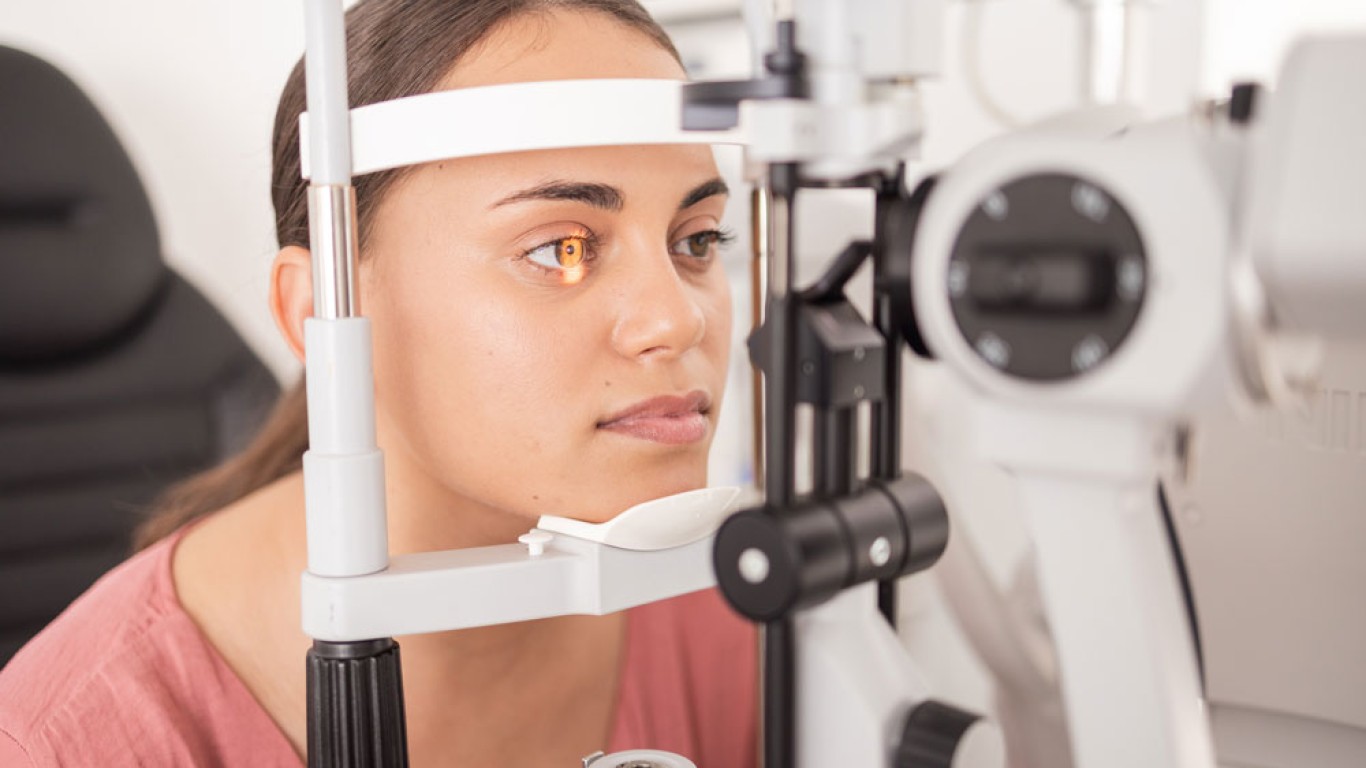Introduction
Clear vision is vital for everyday life, yet millions struggle with nearsightedness, farsightedness, or astigmatism. Glasses and contact lenses help, but many seek permanent solutions. Excimer laser eye surgery offers a precise and effective way to correct refractive errors.
This advanced procedure reshapes the cornea using a laser, improving how light enters the eye. In this guide, we’ll explain how the surgery works. It details who it’s for, and what recovery looks like.
What Is Excimer Laser Eye Surgery?
- Excimer laser eye surgery uses an ultraviolet laser to reshape the cornea. It corrects common vision problems. It’s used in procedures like LASIK and PRK.
- The excimer laser removes microscopic layers of tissue with extreme accuracy. This changes the curvature of the cornea so light focuses correctly on the retina.
- The technique is bladeless, non-thermal, and computer-controlled. It has been safely used for decades and continues to evolve.
- Additionally, this surgery reduces or removes the need for glasses or contacts for many patients.
How the Excimer Laser Eye Surgery Works
- The excimer laser emits a cool beam of ultraviolet light. It removes corneal tissue without damaging nearby cells.
- This precision allows for highly customised treatments. Surgeons use detailed maps of your eye to guide the laser.
- Each pulse of the laser removes just 0.25 microns of tissue. That is less than one-hundredth the thickness of a human hair.
- Because it doesn't generate heat, the excimer laser avoids damage to surrounding tissue. This helps protect eye structures and speeds up recovery.
Common Conditions Treated
Excimer laser eye surgery treats several vision issues:
- Myopia (nearsightedness): Light focuses in front of the retina. The laser flattens the cornea to shift focus back.
- Hyperopia (farsightedness): Light focuses behind the retina. The laser makes the cornea steeper.
- Astigmatism: Uneven curvature causes blurred vision. The laser smooths and reshapes the surface.
In many cases, multiple errors are corrected in a single session. This results in sharper vision and greater independence from glasses or lenses.
Who Is a Suitable Candidate?
Not everyone is eligible for this type of surgery. Ideal candidates usually meet the following criteria:
- Over 18 years old
- Stable vision for at least one year
- Healthy corneas and overall eye health
- No history of eye disease or infection
Additionally, individuals should not be pregnant or breastfeeding at the time of surgery. Your surgeon will perform detailed tests to determine suitability.
People with autoimmune disorders or thin corneas may not be good candidates. Alternatives such as implantable lenses might be considered instead.

Types of Procedures Using Excimer Laser
Several procedures involve excimer laser eye surgery, including:
- LASIK: A flap is created in the cornea, the laser reshapes the tissue, and the flap is repositioned.
- PRK: The outer layer is removed entirely, and the laser corrects the shape.
- FemtoLASIK: A femtosecond laser creates the corneal flap with high precision. This is then followed by Excimer laser reshaping.
- SMILE: A small incision is made. A thin disc of corneal tissue is then removed to correct vision.
All three methods use the same laser technology. The choice depends on your eye structure, lifestyle, and surgeon’s recommendation.
Excimer Laser Eye Surgery:Step-by-Step Procedure Overview
The process is usually quick and painless. Here’s what to expect:
- Numbing drops are applied to the eyes.
- An eyelid holder prevents blinking.
- A corneal flap may be created, depending on the method.
- The excimer laser reshapes the cornea.
- The flap is replaced or a contact lens is placed to protect the eye.
The surgery takes 10 to 15 minutes per eye. You remain awake and can return home the same day.
Recovery Timeline and Aftercare
Recovery from excimer laser eye surgery varies by procedure. LASIK typically has the fastest healing time.
- Day 1–3: Mild discomfort, light sensitivity, and blurry vision are common. Rest and avoid screen time.
- Week 1: Vision stabilises. Most people return to work and regular activities.
- Month 1–3: Final results become clearer. Attend all follow-up appointments to monitor progress.
Important aftercare tips:
- Avoid rubbing your eyes
- Wear protective eyewear outdoors
- Use prescribed drops to prevent infection
- Follow your surgeon’s guidance closely
Benefits of Excimer Laser Surgery
There are many reasons people choose this form of vision correction:
- Precision: Customised treatment plans match your exact corneal shape.
- Quick recovery: Most resume daily activities within a few days.
- Reduced dependence: Many patients no longer need glasses or contact lenses.
- Long-term results: Outcomes are stable and reliable for years.
- Minimal pain: The procedure is mostly painless, with only minor discomfort afterwards.
Additionally, many patients experience a significant boost in confidence and quality of life.
Possible Side Effects and Risks
Although safe, Excimer laser eye surgery carries some risks. Common short-term side effects include:
- Dry eyes
- Glare or halos around lights
- Light sensitivity
- Temporary blurred vision
Most of these resolve within weeks. Rare complications include under-correction, over-correction, or flap issues (in LASIK).
Choosing an experienced surgeon reduces these risks. Report any unusual symptoms to your clinic immediately.
Is the Surgery Permanent?
In most cases, results are long-lasting. However, vision may change over time due to ageing or other factors. Some people may need enhancement surgery later. Others may still require glasses for reading after age 40. Nonetheless, many patients enjoy clear, stable vision for years. Ongoing eye health check-ups ensure continued success.
Conclusion
To summarise, excimer laser eye surgery is a safe, precise, and effective option for vision correction. Whether treating nearsightedness, farsightedness, or astigmatism, it offers long-term results with minimal discomfort.
Understanding the procedure, recovery, and benefits helps you make an informed decision. With proper care and a skilled surgeon, you can look forward to clearer vision and greater freedom from glasses.
For more information on excimer laser eye surgery and to book a consultation visit the ACIBADEM Beauty Center laser eye surgery webpage.
Frequently Asked Questions
No. Numbing drops are used. Most patients feel only mild discomfort after the procedure.
Most people return within two to three days, especially after LASIK procedures.
Yes. Both eyes are typically done in one session, unless your surgeon advises otherwise.
Most don’t, though reading glasses may be needed later due to age-related changes.
Yes, if the eyes are healthy. Your surgeon will assess eligibility during your consultation.














